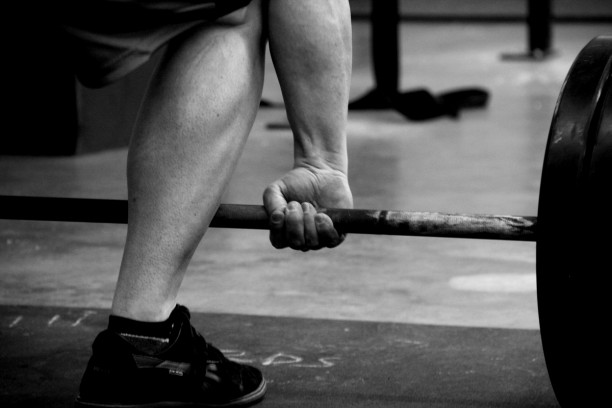Ah, the hook grip. Joining paleo diets, chalked hands and foam rollers, the hook grip has become part of the canonical gospel of Crossfit. The common consensus seems to be: thou shalt hook grip. Thou shalt use it on the Clean, and on the Snatch, and a higher place in heaven shall be attained by using it on the deadlift. Thou shalt hook grip thy steering wheel, and thy gym bag, and thy breakfast spoon, for good measure.
Except that there are several “maybes” in there. Hook grip, like chalk, is a tool, and a very useful one. When pulling heavy weight from the floor for a snatch or clean, it can allow you to move considerably more weight with considerably more speed than you may be able to with a normal grip. That is, it can, if you have a good hook grip. If you don’t, it can make the movement awkward, uncomfortable and more complicated than it would otherwise be. If you aren’t getting it right, it may even make your grip on the bar less strong or less controlled.
Those who insist that a hook grip is the only way ever to clean or snatch are akin to those who would insist that there is only one proper stance for squats. It’s been proven over and over again that differences in individual strengths and bone structure will dictate what your squat stance should be. Why is grip preference any different? The hand is certainly one of the most complex parts of the body, and differences in bone length, angle and structure can vary wildly from one person to the next. Contrary to what many CrossFit sites may assert, the problems many people experience with hook grip may have nothing to do with “mobility,” and everything to do with geometry.
None of that means that the hook grip is impossible for some people, just that it’s much more difficult to master for them. Difficult enough that it may be useful to sideline it when teaching them a new movement, until the more essential elements are mastered.
If an athlete’s grip is nowhere near the weakest point of their movement, why is there a need to change their technique? The reason often presented is that “well, it’ll help later when they’re lifting really heavy.” But what if that isn’t every athlete’s goal? Maybe not every athlete will get to the point where the power of their posterior chain will exceed that of their grip. Or maybe some athletes prefer to continue to develop their normal grip strength. Or maybe the transition from hook grip to front or overhead rack adds too much unnecessary complexity for some newer (or even more experienced) athletes, to be worth the trouble.
Besides which, there is no one claiming that a hook grip takes an enormous amount of time to learn. By sharp contrast to an incredibly complex movement like snatch, most trainers and coaches agree that hook grip can be picked up (pun intended!) in a couple weeks, so why not wait to introduce it until it’s needed?
None of this is to say that it shouldn’t be taught, or that you shouldn’t learn it, or that it isn’t a useful tool. But it is just that, a tool. You don’t need a 12 pound sledgehammer when you’re driving a roofing nail. I don’t wear a belt when I’m deadlifting 185. The hook grip is a technique that should be honestly attempted until it is mastered, but there are plenty of circumstances, particularly within the realm of CrossFit, where it doesn’t make sense (think low weight, power clean metcons).
If you love yourself some hook grip, that’s great! Just don’t proselytize.

